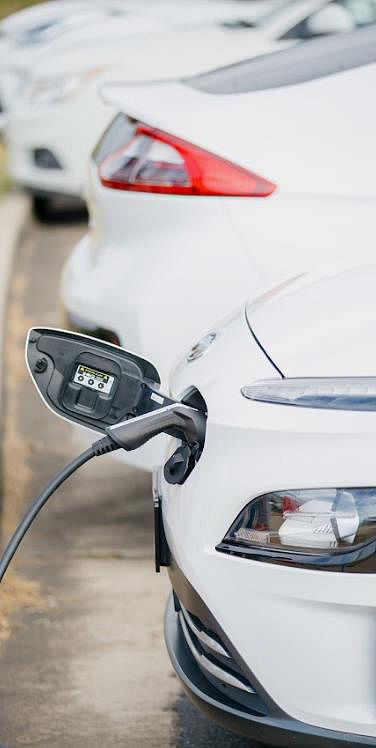Electric Vehicles
Frequently asked questions about installing an electric vehicle charging unit. Information provided by NSW Government Department of Planning and Environment.
 This document answers frequently asked questions about installing an electric vehicle charging unit and explains the relevant planning provisions in the State Environmental Planning Policy (Transport and Infrastructure) 2021.
This document answers frequently asked questions about installing an electric vehicle charging unit and explains the relevant planning provisions in the State Environmental Planning Policy (Transport and Infrastructure) 2021.
An electric vehicle charging unit (EVC unit) is a type of infrastructure that is used to recharge the battery in electric vehicles.
Demand for electric vehicles is increasing as people embrace emerging technologies and cleaner energy options. Under the NSW Electric Vehicle Strategy (2021), electric vehicle sales are expected to increase to 52% by 2030–31. This demand also increases the requirement for EVC units. Therefore, more electric vehicle facilities are needed in appropriate and convenient locations across the state.
The proposed changes will make it easier to build charging facilities through a streamlined approval process. Providing a clear path through the approval process encourages more investment in charging locations.
The planning approval pathway for EVC units can be found in the NSW State Environmental Planning Policy (Transport and Infrastructure) 2021 (State Policy). Depending on the scale or location of the EVC unit, the State Policy provides three different planning approval pathways, including the following.
- Exempt development: relates to very low-impact development. If the proposed works meet all development standards identified in the State Policy, approval is not needed from Council.
- Development with consent: refers to a development that will need approval from a consent authority such as a council or the Planning Minister. Of the different types of consent, council approvals under Part 4 of the EP&A Act are the most common.
- Development without consent: this applies to activities done by councils, NSW Government departments or agencies, or private bodies deemed to be public authorities. A public authority can only approve these activities following an environmental assessment under Part 5 of the Environmental Planning and Assessment Act 1979 (EP&A Act).
EVC units are exempt development where installed in the following locations:
- private homes
- car parks (commercial, public or private)
- bus depots
- road maintenance depots
- service stations
- highway service centres
- car washing facilities, or
- on public administration buildings.
Yes, an electricity supply authority or a public authority can install an EVC unit as exempt development on existing:
- electricity poles, or
- lighting poles.
A public authority can install an EVC unit as exempt development on existing street furniture, including the following:
- parking meters
- telephone booths
- rubbish bins or recycling bins
- planter boxes
- street signs
- benches, or
- bollards.
Sections 2.124D, 2.124E, 2.124F and 2.20 of the State Policy set out the complete list of development standards you must fully satisfy before installing an EVC unit as exempt development. If it does not, then it is no longer exempt development and another approval pathway must be used, such as a development application.
Development standards are criteria that manage the impacts of the installation. For instance, all EVC units must be installed according to the manufacturer’s specifications and must comply with the relevant Australian Standards.
You must comply with any existing condition of the most recent development consent that applies to the premises. For instance, some development consents specify a minimum number of parking spaces that must be provided for residents and visitor parking. Building owners should consult their local council to determine if an existing car space that will be used only for electric vehicle charging breaches any conditions of existing development consent.
Public authorities will be able to install some types of EVC units without obtaining development consent but will be required to undertake an environmental assessment under Part 5 of the EP&A Act before carrying out the activity.
The location of the units must be on a footpath adjacent to an area where a vehicle may be lawfully parked. This pathway allows new EVC units to be assessed strategically, leading to good on-ground outcomes.
Similarly to the exempt development pathway, section 2.124 of the State Policy sets out the full list of development standards you must fully satisfy before installing an EVC unit as development without consent.
The State Policy also provides planning pathways to install EVC units using development with consent provisions.
Section 2.124A allows an electricity supply authority or public authorities to develop EVC units on any land as long as they do not obstruct movement or interfere with firefighting equipment. For instance, for a proposal involving substations, an electrical supply authority can utilise this pathway.
When a homeowner or occupier does not have access to a private garage or carport and is required to park on the street, the development with consent planning pathway allows homeowners or occupiers to install an EVC unit on public land. Section 2.124B allows homeowners or occupiers to apply for a development application with council to install an EVC unit on public land as long as the electrical power is connected to the residential dwelling and the cables are located underground.
Section 2.124C also allows for the development of EVC units in a wide variety of zones or on land on which there is an existing service station, highway service centre or car washing facility.
Yes, there are development standards in the State Policy for both development with consent and development without consent planning pathways. Development standards are requirements that must be met for a specific planning approval pathway to be used for a proposed EVC unit. If the development standards are not met, the proposal cannot use that pathway.
Advertising integrated into the EV charging unit is permitted as exempt development and development without consent in certain locations. Advertising includes a screen or other displays capable of displaying advertisements that must be fully contained within the EVC unit.
To be exempt development:
• the development must comply with section 2.20
• the sign must be fully contained within the unit
• the sign must not have a surface area greater than 3m2
• the sign must comply with AS/NZS 4282:2019, Control of the obtrusive effects of outdoor lighting, and
• if the sign is illuminated—it must not be animated, flashing or moving.
Each display (or screen) in an EVC unit must not have a surface area greater than 3m2 . However, there is no restriction on how many displays (or screens) an EVC unit can have. Therefore, an EVC unit may have multiple displays, with each display (or screen) no greater than 3m2 .
Advertising in an EVC unit can only be located where the exempt development for an EVC unit is allowed, for instance, in a car park or a service station or attached to street furniture.
Advertising in an EVC unit can also be approved under development without consent.
If your proposal does not meet the required standards for either exempt development or development without consent, you may still be able to proceed, but you will need development approval first. In this case, you should contact your local council to discuss the option.
We encourage you to engage a professional town planner who can help you ensure your proposal meets the required development standards.
More information
Contact the NSW Planning Customer Support Team
- Telephone 1300 420 596
- Email: information@planning.nsw.gov.au






